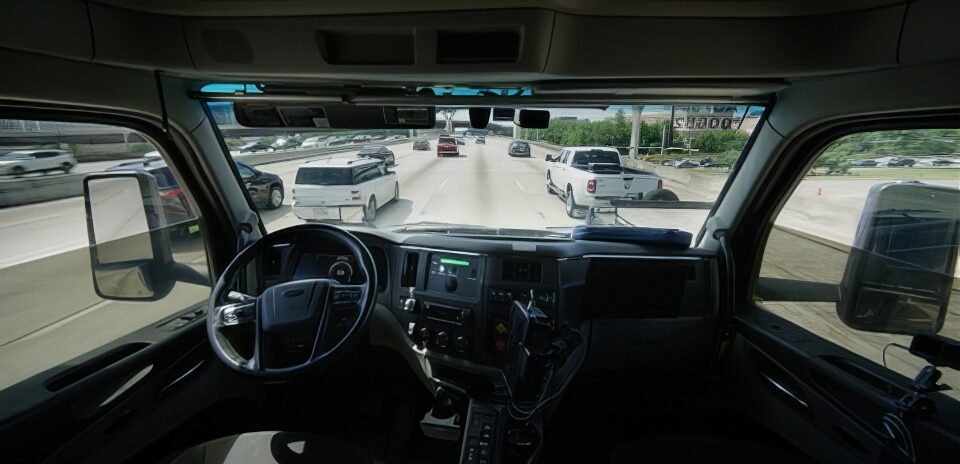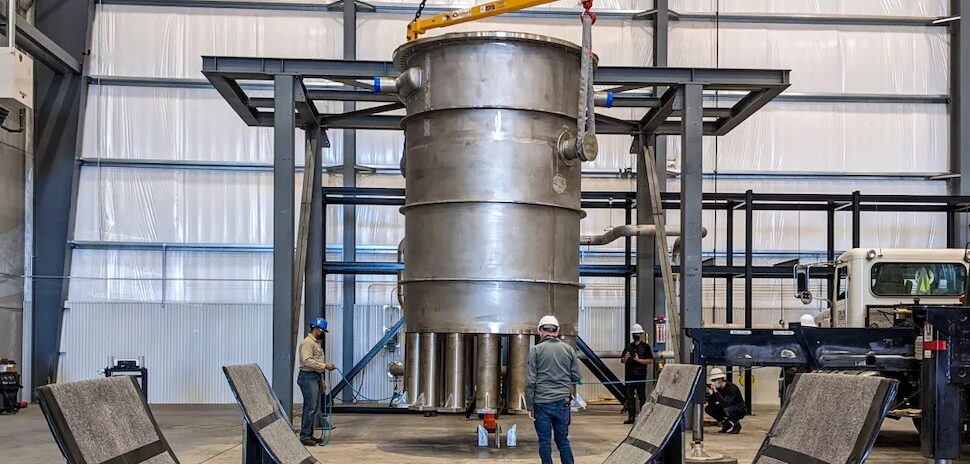Technology
This Beats Powerbeats Pro 2 Deal Is a Flex
PCMag editors select and review products independently. If you buy through affiliate links, we may earn commissions, which help support our testing. Trying to work out with earbuds that don’t stay in place is more than enough reason to hit the showers early. But you don’t want an audio apparatus to dictate your exercise. Enter […]

PCMag editors select and review products independently. If you buy through affiliate links, we may earn commissions, which help support our testing.

Trying to work out with earbuds that don’t stay in place is more than enough reason to hit the showers early. But you don’t want an audio apparatus to dictate your exercise. Enter the Beats Powerbeats Pro 2, which fit securely, offer excellent noise cancellation, and blast enough bass to keep you focused on your workout. Currently, they’re marked down by $50 to $199.95 – the lowest price we’ve seen them at – making this deal a great excuse to finally upgrade your earbuds.
The Beats Powerbeats Pro 2 stay in place, block out distractions with noise cancellation, and last up to 45 hours, so you don’t need to worry about charging mid-sesh. Plus, they’re sweatproof, so you can keep pushing through those tough sets without a second thought. The bass is solid too, keeping you pumped, and the heart rate monitor tracks your fitness goals without missing a beat. PCMag’s expert Christian de Looper gave these Beats an “Excellent” rating in his review, calling them a “game-changer” for workout earbuds. He added that if you like Beats’ bass-forward audio profile, you’ll be in love with how these sound.
For $199.95, the Beats Powerbeats Pro 2 are basically your new workout BFFs. They’ll probably last longer than your motivation to hit the gym. Plus, they come in four different colors, so you can pick your buddy. If you upgrade today, your future self is going to thank you!
More Deals on Earbuds
Technology
Google offers buyouts to more workers amid AI-driven tech upheaval and antitrust uncertainty – East Bay Times
MOUNTAIN VIEW — Google has offered buyouts to another swath of its workforce across several key divisions in a fresh round of cost cutting coming ahead of a court decision that could order a breakup of its internet empire. The Mountain View, California, company confirmed the streamlining that was reported by several news outlets. It’s […]

MOUNTAIN VIEW — Google has offered buyouts to another swath of its workforce across several key divisions in a fresh round of cost cutting coming ahead of a court decision that could order a breakup of its internet empire. The Mountain View, California, company confirmed the streamlining that was reported by several news outlets.
Technology
Peloton Announces Appointment of Chief Marketing Officer and Creates Chief Technology Officer Role to Focus on AI Innovation Strategy
Megan Imbres to join Peloton Interactive, Inc. as its Chief Marketing Officer. Megan Imbres will join as Chief Marketing Officer; Peloton’s Francis Shanahan will serve as CTO NEW YORK, June 12, 2025–(BUSINESS WIRE)–Peloton Interactive, Inc. (NASDAQ: PTON) has appointed Megan Imbres to its leadership team as Chief Marketing Officer. The company has also created a […]

Megan Imbres will join as Chief Marketing Officer; Peloton’s Francis Shanahan will serve as CTO
NEW YORK, June 12, 2025–(BUSINESS WIRE)–Peloton Interactive, Inc. (NASDAQ: PTON) has appointed Megan Imbres to its leadership team as Chief Marketing Officer. The company has also created a Chief Technology Officer role, promoting Francis Shanahan, its Senior Vice President of Connected Fitness Software, to the position. Together, the appointments represent a commitment to creative and technical innovation to empower Peloton Members to live fit, strong, long, and happy.
Megan Imbres, who will join the company on July 7, will oversee global brand and product marketing, growth marketing, creative, consumer insights, and member engagement. She brings more than 20 years of experience with direct-to-consumer brands, including expertise in data-driven performance marketing, brand development, and creative strategy for some of the world’s most influential technology and entertainment companies. She will report to CEO Peter Stern.
Megan most recently served as Managing Director of Apple Marcom LA, the global marketing communications group responsible for the company’s services businesses, overseeing significant creative campaigns and delivering tentpole cultural moments, including the Apple Music Super Bowl Halftime Show and Apple TV’s partnership with Major League Soccer. Prior to Apple, Megan played a pivotal role in the growth of Netflix, first helping to build the brand and streaming category before later establishing the Netflix Originals brand. Other previous positions include Global Head of Brand Marketing for Amazon Ads and Head of Brand and Content Marketing for the mobile streaming startup Quibi, working closely with founders Jeffrey Katzenberg and Meg Whitman. She is also a passionate cyclist and competitive triathlete, recently qualifying for the Kona Ironman 2025 World Championships.
“Megan’s experience in growing direct-to-consumer subscription businesses, her creative instincts, and her track record of delivering culturally resonant campaigns will propel us on our path towards growth,” said Stern. “I look forward to working alongside her and our fantastic marketing organization as we deepen our connection with our millions of existing Members and meet millions of new ones.”
Francis Shanahan has been promoted to Chief Technology Officer, reporting to Chief Product Officer Nick Caldwell. In this position, he leads Peloton’s engineering and technical teams, spearheads the team’s customer-facing AI innovation strategy, guides product architecture, and ensures its systems are scalable and high-performing, helping the company deliver on its strategic objective of improving Member outcomes.
Technology
North Texas Company Partners with Aurora to Launch Autonomous Vehicle Workforce Program » Dallas Innovates
Volvo VNL Autonomous truck powered by Aurora Driver self-driving technology. [Photo: Aurora Innovation] Aurora Innovation made history in April as the first in the U.S. to transport goods on a U.S. highway with self-driving 18-wheelers—and not a single human aboard. Those historic runs between Dallas and Houston on I-45 could be a harbinger of much […]

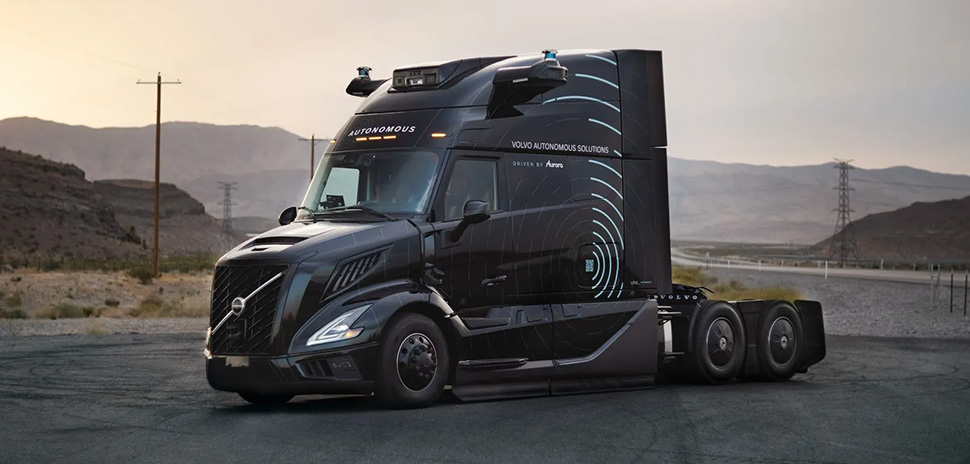
Volvo VNL Autonomous truck powered by Aurora Driver self-driving technology. [Photo: Aurora Innovation]
Aurora Innovation made history in April as the first in the U.S. to transport goods on a U.S. highway with self-driving 18-wheelers—and not a single human aboard. Those historic runs between Dallas and Houston on I-45 could be a harbinger of much more autonomous trucking to come. And now Aurora is partnering with Irving-based On the Road Garage to train workers to support the transition.
Pittsburgh, Pennsylvania-based Aurora (Nasdaq: AUR) later put observers back behind the wheel on the Dallas-Houston runs, at least temporarily, at the request of PACCAR, the manufacturer of Aurora’s Peterbilt and Kenworth trucks. But the trucking runs continue with the company’s Aurora Driver technology operating the vehicles.
Now On the Road Garage, which has two locations in Irving and Dallas, is partnering with Aurora by launching OTR Advanced Vehicle Technology—Powered by Aurora, “a cutting-edge apprenticeship and upskilling initiative designed to prepare workers from all backgrounds and experiences for high-growth careers in the autonomous vehicle (AV) industry.”
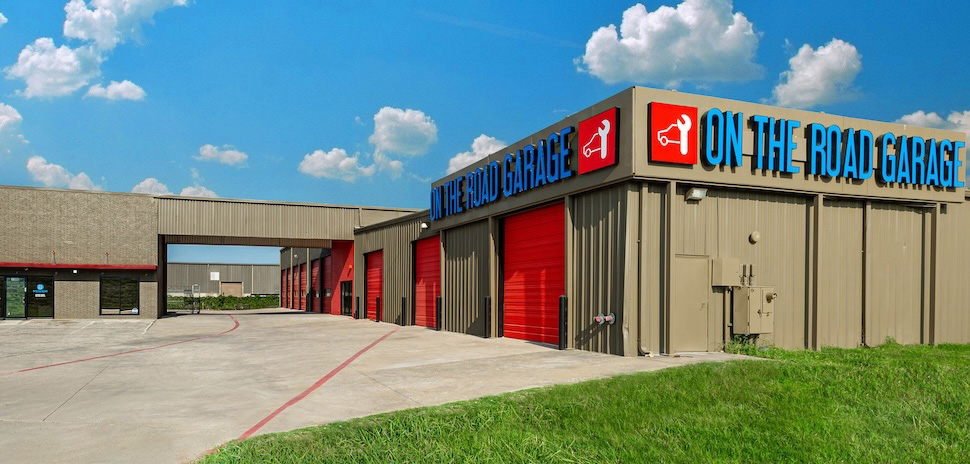
Photo: On the Road Garage
Aurora is advising the program, working with On the Road to co-create curriculum and training pathways that align with the evolving demands of various transportation industries. The training includes AV and electric vehicle repair, ADAS calibration, advanced vehicle technologies, and AV terminal operations, according to Champion Impact Capital, part of the On the Road family of businesses.
‘Creating a national model’

Michelle Corson
Champion was founded by On the Road Garage CEO Michelle Corson in 2013 to make investments in social enterprises. After forming On the Road Lending and On the Road Motors, the North Texas company launched On the Road Garage in Irving in 2020 as a tech-focused collision repair business to fill a skills gap and talent pipeline shortage.
“This program is about more than just jobs—it’s about building equitable access to the future of mobility,” On the Road VP Roy Villarreal said in a statement. “Through this collaboration with Aurora, we’re creating a national model for inclusive workforce development in emerging transportation technologies.”
The On the Road-Aurora training program combines hands-on training and pathways to industry credentials, the partners said, delivering learning experiences that mirror “the real-world demands” of the autonomous vehicle field. Participants in the program will be trained in skills needed for roles related to advanced diagnostics, sensor calibration, and vehicle repair.
Aurora to inform program’s technical curriculum
Aurora will inform the progam’s technical curriculum, the partners said, enabling apprentices to train on the self-driving vehicle platforms that have made history lately in Texas. The collaboration supports long-term goals around safety, scalability, and sustainability within the AV workforce ecosystem, the partners added.
“At Aurora, we’re not just building a business, we’re building an industry,” Aurora President Ossa Fisher said in a statement. “We’re proud to partner with On the Road Garage to build career pipelines that will not only train future transportation industry leaders, but prioritize inclusivity as new jobs are created to support autonomous trucking.”
The AV tech training program—which will be offered through On the Road Garage’s Apprenticeship program—will include opportunities for industry-recognized credentials, mentorship, and real-time skills assessment, which build on existing and well-established programs related to transportation and collision repair, On the Road said.
On the Road Garage provides advanced vehicle collision repair and advanced driver assistance systems (ADAS) calibration along with “technology-forward” apprenticeships and training. The company said it’s dedicated to programs “that drive economic mobility to address transportation challenges and equip the next generation of automotive technicians.”
Don’t miss what’s next. Subscribe to Dallas Innovates.
Track Dallas-Fort Worth’s business and innovation landscape with our curated news in your inbox Tuesday-Thursday.
Technology
Wearable fitness trackers can make you seven times more likely to stick to your workouts: New research
Credit: CC0 Public Domain The hardest part of any workout regime is sticking with it. Around half of those who start an exercise program stop within six months. But our recent study found that using wearables (such as a smartwatch) not only makes people more likely to start working out, they’re also seven times more […]


The hardest part of any workout regime is sticking with it. Around half of those who start an exercise program stop within six months.
But our recent study found that using wearables (such as a smartwatch) not only makes people more likely to start working out, they’re also seven times more likely to still be active after six months compared to those who didn’t use a smartwatch.
Our study focused specifically on adults who had recently been diagnosed with type 2 diabetes. Physical activity is a cornerstone of type 2 diabetes management, as it helps regulate blood sugar, supports cardiovascular health and improves quality of life.
Yet around 90% of people with type 2 diabetes fall short of weekly physical activity recommendations. Common barriers include low motivation, uncertainty about what activity is safe and a lack of tailored support.
Our study tested a new approach using wearable technology and remote coaching to overcome these barriers. We found that people who followed a smartwatch-supported remote coaching program were ten times more likely to start a workout regime than those who received remote coaching alone.
The study involved 125 adults aged between 40 and 75 from the UK and Canada who had recently been diagnosed with type 2 diabetes. All participants worked with an exercise specialist to co-design a personalized six-month physical activity plan. The focus was on gradually increasing both moderate-to-vigorous exercise (with a target of 150 minutes per week) and daily lifestyle activity. Support was delivered remotely through phone or video calls.
Half of the participants were randomly assigned to use wearable technology to support their personalized activity plans. The smartwatch had movement and heart rate sensors, a mobile app to track activity and personalized text messages based on their recent progress. They could also message their coach, receive real-time feedback and adjust their activity plans accordingly.
The results were striking. Compared to the control group, those who were given a smartwatch were ten times more likely to start working out regularly, seven times more likely to still be active after six months and three times more likely to remain active one year later—even after support had ended.
At the end of the program, over 50% of the smartwatch group were meeting recommended activity levels. In comparison, only 17% of the control group were.
Feedback from participants showed that the flexibility of plans, personalized messages and smartwatch data were key motivators. While some faced early challenges with the technology, most adapted quickly.
These findings support growing evidence that wearable technology can help people become—and stay—more active. While our study focused on people with type 2 diabetes, similar benefits have also been observed in the general population.
For example, one trial found that inactive adults (aged 45–75) who were given pedometers and walking advice increased their daily step count by around 660 steps after 12 weeks compared to a control group. Those given a pedometer were also more active three years later.
Since then, wearable technology has advanced. Modern smartwatches now capture a wider range of metrics beyond steps—such as heart rate and activity intensity. A 2022 systematic review and meta-analysis, which analyzed more than 160 randomized controlled trials, found that fitness trackers and similar devices were effective at increasing physical activity by an average of around 1,800 steps per day. Importantly, the most sustained improvements occurred when wearables were paired with personalized feedback or behavioral support.
Together, these studies suggest that wearables can be powerful tools for long-term behavior change and may help us better stick to our fitness goals.
Wearable fitness trackers can be extremely helpful—but only if you use them purposefully. Our research, along with findings from other studies, shows that wearables are most effective when they help you apply proven behavior-change strategies.
Here are some evidence-based tips to help you get the most out of your device:
1. Set realistic, specific goals
Plan exactly when and how you’ll move. Apps can help you set daily or weekly targets. Research shows that breaking down big, vague intentions—such as “get fit”—into small, concrete steps makes it easier to stay motivated and avoid feeling overwhelmed.
2. Schedule activity and stick to it
Use reminders or calendar prompts to build a regular routine. Consistency builds habits, and scheduled activity reduces the chance of skipping workouts due to forgetfulness or lack of planning.
3. Track your progress
Monitoring your activity helps you stay motivated and accountable. This feedback boosts motivation by showing that your efforts are making a difference, increasing your sense of control and accountability.
4. Use small rewards
Many devices include features such as badges or streaks, which reinforce progress. Celebrating small wins triggers feelings of accomplishment, which encourages you to keep going and helps build long-term habits.
5. Share with others
Whether it’s a friend or coach, sharing your progress can boost commitment. Knowing others are aware of your goals can increase motivation, provide encouragement, and help you overcome challenges.
6. The tracker is a tool, not the solution
It won’t change behavior on its own. Its value lies in how it supports your goals and helps you build lasting habits.
These techniques don’t just encourage short-term change—they build motivation, self-belief and routine, which are key for maintaining healthy habits over time.
Our research shows that when wearable tech is used as part of a structured, supportive program, it can make a real difference—especially for people managing health conditions such as type 2 diabetes. By combining wearable technology with personalized coaching and proven behavior change techniques, you might just have a better chance of sticking with your physical activity goals.
The Conversation
This article is republished from The Conversation under a Creative Commons license. Read the original article.![]()
Citation:
Wearable fitness trackers can make you seven times more likely to stick to your workouts: New research (2025, June 12)
retrieved 12 June 2025
from https://medicalxpress.com/news/2025-06-wearable-trackers-workouts.html
This document is subject to copyright. Apart from any fair dealing for the purpose of private study or research, no
part may be reproduced without the written permission. The content is provided for information purposes only.
Technology
Europe Luxury & Sports Cars Market Size, Share, Growth Trends,
luxury sports cars market “ The Luxury & Sports Cars market is undergoing a period of dynamic expansion, fueled by a confluence of factors including burgeoning disposable incomes in emerging economies, rapid technological advancements in automotive engineering, and an increasing consumer desire for personalized and high-performance vehicles. These vehicles are no longer solely symbols of […]


luxury sports cars market
“
The Luxury & Sports Cars market is undergoing a period of dynamic expansion, fueled by a confluence of factors including burgeoning disposable incomes in emerging economies, rapid technological advancements in automotive engineering, and an increasing consumer desire for personalized and high-performance vehicles. These vehicles are no longer solely symbols of status, but increasingly represent technological prowess and a commitment to sustainable performance. Electrification is rapidly transforming the sector, with hybrid and fully electric models gaining significant traction, driven by stringent emissions regulations and growing environmental awareness. Furthermore, the integration of advanced driver-assistance systems (ADAS), cutting-edge infotainment, and connectivity features is enhancing the driving experience and attracting a tech-savvy consumer base. The market also plays a crucial role in addressing global challenges by pushing the boundaries of automotive innovation, particularly in areas such as fuel efficiency, safety, and autonomous driving. This constant evolution and commitment to excellence position the luxury and sports car market as a key indicator of broader automotive industry trends and a significant contributor to global economic growth.
Get the full PDF sample copy of the report: (TOC, Tables and figures, and Graphs) https://www.consegicbusinessintelligence.com/request-sample/2693
Market Size:
The Luxury & Sports Cars Market size is estimated to reach over USD 1,054.53 Billion by 2032 from a value of USD 652.43 Billion in 2024. The market is projected to grow by USD 681.44 Billion in 2025, growing at a CAGR of 6.7% from 2025 to 2032.
Definition of Market:
The Luxury & Sports Cars market encompasses the production, distribution, and sale of high-end automobiles designed to provide superior levels of comfort, performance, and exclusivity. This market segment is characterized by vehicles that offer advanced technologies, premium materials, and distinctive styling. The market includes a range of vehicle types, from high-performance sports cars designed for speed and agility to luxurious sedans offering unparalleled comfort and refinement.
Key terms associated with this market include:
Luxury Car: Vehicles offering a high level of comfort, features, and quality beyond that of standard automobiles. They often include premium materials, advanced technology, and enhanced performance capabilities.
Sports Car: Vehicles designed with a focus on performance, handling, and driver engagement. They typically feature powerful engines, responsive steering, and aerodynamic designs.
Supercar: A high-performance sports car, often with limited production runs, offering extreme levels of speed, handling, and exclusivity.
Hybrid Vehicle: A vehicle that combines a traditional internal combustion engine with an electric motor and battery system to improve fuel efficiency and reduce emissions.
Electric Vehicle (EV): A vehicle powered solely by an electric motor and battery system, producing zero tailpipe emissions.
Autonomous Driving: Technology that allows vehicles to operate with minimal or no human intervention. It is often implemented through Advanced Driver Assistance Systems (ADAS).
Get Discount On Report @ https://www.consegicbusinessintelligence.com/request-discount/2693
Market Scope and Overview:
The Luxury & Sports Cars market spans a wide range of technologies, applications, and industries. This market includes the design, engineering, manufacturing, and sales of vehicles equipped with advanced features such as cutting-edge engine technology, sophisticated suspension systems, advanced driver-assistance systems (ADAS), and premium interior finishes. The applications of these vehicles extend beyond personal transportation to include motorsports, luxury travel, and high-performance driving experiences. The industries served by this market encompass automotive manufacturers, suppliers of components and materials, dealerships, aftermarket service providers, and technology companies specializing in automotive innovation.
The Luxury & Sports Cars market plays a vital role in the larger context of global automotive trends. It drives innovation in areas such as electrification, autonomous driving, and connectivity, which eventually permeate the broader automotive market. This market sets benchmarks for performance, safety, and luxury, influencing consumer expectations and technological development across the entire automotive industry. Furthermore, the demand for luxury and sports cars reflects underlying economic trends and consumer preferences, making it a key indicator of overall market health and societal priorities. As global awareness of environmental sustainability grows, the luxury and sports car market is also responding by embracing electrification and developing eco-friendly materials and manufacturing processes. This demonstrates the market’s capacity to adapt and lead in the face of evolving societal demands and environmental concerns.
Top Key Players in this Market
Audi (Germany) BMW (Germany) Cadillac (U.S.) Genesis (South Korea) Jaguar Land Rover (U.K.) Lexus (Japan) Maserati (Italy) Mercedes-Benz (Germany) Porsche (Germany) Volvo (Germany)
Market Segmentation:
The Luxury & Sports Cars market can be segmented in the following ways:
By Vehicle Type: This segment includes SUVs, Sedans/Hatchbacks, and Sports/Super Luxury Cars. SUVs are gaining popularity for their combination of luxury and practicality. Sedans/Hatchbacks offer a balance of comfort and performance, while Sports/Super Luxury Cars focus on high performance and exclusivity.
By Propulsion: This segment is divided into Electric/Hybrid and ICE (Internal Combustion Engine) vehicles. Electric/Hybrid vehicles are experiencing rapid growth due to increasing environmental awareness and government incentives. ICE vehicles still hold a significant share but are gradually being replaced by more sustainable options.
By Component: This segment includes Drivetrain, Interior, Body, Electronics, and Chassis. Each component plays a crucial role in the performance, comfort, and safety of luxury and sports cars. Innovations in each of these areas contribute to the overall market growth.
Market Drivers:
Technological Advancements: Continuous innovation in engine technology, materials science, and electronic systems is driving the development of more powerful, efficient, and safer luxury and sports cars.
Government Policies: Stringent emissions regulations and incentives for electric vehicles are encouraging manufacturers to invest in hybrid and electric models.
Increasing Demand for Sustainability: Growing consumer awareness of environmental issues is driving demand for electric and hybrid luxury and sports cars.
Rising Disposable Incomes: Increasing wealth, especially in emerging markets, is enabling more consumers to afford luxury and sports cars.
Desire for Personalized Experiences: The ability to customize and personalize vehicles to individual tastes is a major draw for luxury car buyers.
Market Key Trends:
Electrification: The shift towards electric and hybrid powertrains is transforming the luxury and sports car market.
Autonomous Driving: The integration of advanced driver-assistance systems (ADAS) is making luxury and sports cars safer and more convenient to drive.
Connectivity: The increasing integration of connectivity features, such as over-the-air updates and smartphone integration, is enhancing the ownership experience.
Personalization: Manufacturers are offering a wider range of customization options to cater to individual consumer preferences.
Focus on Sustainability: A growing emphasis on sustainable materials and manufacturing processes is becoming increasingly important.
Market Opportunities:
Expansion in Emerging Markets: Untapped potential in countries with rapidly growing economies and increasing disposable incomes.
Development of Advanced Technologies: Opportunities to innovate in areas such as autonomous driving, electrification, and connectivity.
Customization and Personalization: Expanding the range of customization options to cater to individual consumer preferences.
Subscription Services: Offering subscription-based access to luxury and sports cars can attract a wider range of customers.
Sustainable Materials and Manufacturing: Investing in eco-friendly materials and production processes can appeal to environmentally conscious consumers.
Market Restraints:
High Initial Costs: The high price of luxury and sports cars can be a barrier to entry for many consumers.
Stringent Regulations: Increasingly strict emissions and safety regulations can increase the cost of development and production.
Economic Uncertainty: Economic downturns can negatively impact demand for luxury goods, including luxury and sports cars.
Infrastructure Limitations: The lack of charging infrastructure for electric vehicles can limit their adoption in some regions.
Geographic Limitations: Demand for certain types of luxury and sports cars may be limited in some regions due to factors such as climate and road conditions.
Market Challenges:
The Luxury & Sports Cars market faces a multifaceted array of challenges that demand strategic adaptation and innovative solutions from industry players. One of the most significant challenges is the escalating pressure to meet increasingly stringent environmental regulations, particularly concerning emissions and fuel efficiency. Manufacturers are compelled to invest heavily in the development of electric and hybrid powertrains, as well as lightweight materials, to comply with these regulations while maintaining the performance and driving experience that define luxury and sports cars. This necessitates substantial R&D expenditures and a shift in manufacturing processes, which can impact profitability.
Another critical challenge is managing the supply chain disruptions that have become increasingly prevalent in recent years. Shortages of semiconductors and other essential components have disrupted production schedules and increased costs, impacting the ability of manufacturers to meet demand. Building resilient and diversified supply chains is essential to mitigate these risks, but it requires significant investment and strategic partnerships.
Furthermore, the market is facing evolving consumer expectations and preferences. Younger generations of buyers are placing greater emphasis on sustainability, connectivity, and personalized experiences. Manufacturers must adapt their products and services to cater to these changing demands, which requires a deeper understanding of consumer behavior and a willingness to embrace new technologies and business models. This includes offering a wider range of customization options, integrating advanced connectivity features, and exploring alternative ownership models such as subscription services.
Competition is also intensifying, with new entrants from the electric vehicle sector challenging established luxury car brands. These new players are often more agile and innovative, and they are disrupting the market with their focus on electric powertrains, advanced technology, and direct-to-consumer sales models. To remain competitive, established manufacturers must embrace innovation, streamline their operations, and differentiate their products and services through superior quality, performance, and brand reputation.
Finally, the market is grappling with the ethical and social implications of autonomous driving technology. Ensuring the safety and reliability of autonomous systems is paramount, and manufacturers must address concerns about data privacy, cybersecurity, and the potential displacement of human drivers. This requires collaboration with regulators, technology companies, and other stakeholders to develop robust standards and regulations that promote responsible innovation and public trust.
Market Regional Analysis:
The Luxury & Sports Cars market exhibits diverse dynamics across different regions, influenced by unique economic, social, and regulatory factors. North America and Europe have historically been major markets for luxury vehicles, driven by high disposable incomes and a strong preference for premium brands. However, stricter emissions regulations and growing environmental awareness are accelerating the adoption of electric and hybrid models in these regions.
The Asia-Pacific region, particularly China, represents a significant growth opportunity for the Luxury & Sports Cars market. The rapid economic growth in these countries has led to a surge in demand for luxury goods, including high-end automobiles. In addition, the Asia-Pacific market presents specific tastes and needs, such as a higher preference for chauffeur-driven experiences and longer wheelbases, leading to customized models catered to these regional needs.
Other regions, such as the Middle East and Latin America, also offer potential for growth, albeit with unique challenges. The Middle East is characterized by a strong preference for high-performance vehicles and a willingness to spend on luxury goods. Latin America, on the other hand, is more price-sensitive and faces economic instability, which can impact demand for luxury vehicles. Understanding these regional nuances is crucial for manufacturers to develop effective market entry and growth strategies.
Frequently Asked Questions:
What is the projected growth of the Luxury & Sports Cars market?
The Luxury & Sports Cars market is projected to grow at a CAGR of 6.7% from 2025 to 2032, reaching over USD 1,054.53 Billion by 2032.
What are the key trends driving growth in this market?
Key trends include the increasing adoption of electric and hybrid powertrains, the integration of advanced driver-assistance systems, and the growing demand for personalized vehicles.
What are the most popular Market types?
The most popular Market types include SUVs, Sedans, and Sports Cars, each catering to different consumer preferences and needs.
Follow us on:
https://www.linkedin.com/company/tech-futures-forum/
https://www.linkedin.com/company/trend-realm/
https://www.linkedin.com/company/data-trail-mru/
https://www.linkedin.com/company/insight-grid/
https://www.linkedin.com/company/digital-disruption-digest/“
Contact Us:
Consegic Business intelligence Pvt Ltd
Baner Road, Baner, Pune, Maharashtra – 411045
(US) (505) 715-4344
info@consegicbusinessintelligence.com
sales@consegicbusinessintelligence.com
Web – https://www.consegicbusinessintelligence.com/
About Us:
Consegic Business Intelligence is a data measurement and analytics service provider that gives the most exhaustive and reliable analysis available of global consumers and markets. Our research and competitive landscape allow organizations to record competing evolutions and apply strategies accordingly to set up a rewarding benchmark in the market. We are an intellectual team of experts working together with the winning inspirations to create and validate actionable insights that ensure business growth and profitable outcomes.
We provide an exact data interpretation and sources to help clients around the world understand current market scenarios and how to best act on these learnings. Our team provides on-the-ground data analysis, Portfolio Expansion, Quantitative and qualitative analysis, Telephone Surveys, Online Surveys, and Ethnographic studies. Moreover, our research reports provide market entry plans, market feasibility and opportunities, economic models, analysis, and an advanced plan of action with consulting solutions. Our consumerization gives all-inclusive end-to-end customer insights for agile, smarter, and better decisions to help business expansion.
Connect with us on:
LinkedIn – https://www.linkedin.com/company/consegic-business-intelligence/
YouTube – https://www.youtube.com/@ConsegicBusinessIntelligence22
Facebook – https://www.facebook.com/profile.php?id=61575657487319
X – https://x.com/Consegic_BI
Instagram – https://www.instagram.com/cbi._insights/
This release was published on openPR.
Technology
Ballers Closes $20M Series A, Announces Opening of Flagship ‘Social Sports Venue’ in Philadelphia
David Gutstadt Ballers has closed a $20 million Series A co-led by specialized New York venture firms Sharp Alpha and RHC Group, as it announced the opening of its first “social sports venue” in Philadelphia, the headquarters of the company building hospitality-driven centers across the country. The creative startup — started by Equinox veterans and […]


David Gutstadt
Ballers has closed a $20 million Series A co-led by specialized New York venture firms Sharp Alpha and RHC Group, as it announced the opening of its first “social sports venue” in Philadelphia, the headquarters of the company building hospitality-driven centers across the country.
The creative startup — started by Equinox veterans and Fitler Club founders David Gutstadt and Amanda Potter, who are married to each other, and Vero Capital founder Daniel Bassichis — has also won the backing of high-profile athletes and celebrities. Tennis icons Andre Agassi, Kim Clijsters and Sloane Stephens; the world No. 3 singles pickleball player Connor Garnett, MLS star and padel aficionado Maarten Paes, and Philadelphia 76ers owner David Blitzer were among those who joined the investment round.
“Having played tennis in college, racquet sports have always been a passion of mine. So when we saw the opportunity to marry the powerful trend and innovations in urban social sports including pickleball, padel and golf with our unique expertise in design and community-building, we went all in on Ballers,” said Gutstadt, who serves as Ballers’ CEO. “The incredible response to our Philadelphia pop-up last year showed us that people are craving this connection through sports, and we’re excited to show that when paired with unparalleled hospitality, athletics can go beyond just leagues, lessons or court time.”
Potter, who serves as the company’s chief creative officer, underlined the point that Ballers is not just a sports facility, adding that “we’re merging sport and culture, creating a social hub for fashion, art and community.”
Ballers says it is bringing “country club sports to the city.” Its centers will have pickleball, padel, golf, squash and soccer, along with food and beverages and dynamic event spaces, among other facilities. It has picked sites ranging from decommissioned power plants to downtown rooftops. Ballers’ Philadelphia site is located at the Turbine Hall space of The Battery in Fishtown, and will sport six pickleball courts, three padel courts, four golf simulators, fitness and recovery spaces, and food and beverage service.
Ballers plans launches in Boston in August and in Miami either in the last quarter or early next year. Over the next 7-10 years, it expects to open over 50 locations, including Los Angeles, New York, Washington, D.C., Chicago, Connecticut and Toronto.
“Consumers are prioritizing meaningful shared experiences and lasting connections,” said Lloyd Danzig, managing partner of Sharp Alpha. “Competition is the fastest-growing centerpiece for socialization. Modern urban country clubs sit right at the intersection of these trends.”
RHC Group founder Richard Hsiao said he doesn’t see his backing as just an investment in racquet sports, but as “an investment in a new business model that seeks to channel how active consumers want to play and be entertained, all while keeping true to the cities and neighborhoods that make their experiences unique.”
-

 Health1 week ago
Health1 week agoOregon track star wages legal battle against trans athlete policy after medal ceremony protest
-

 NIL2 weeks ago
NIL2 weeks ago2025 NCAA Softball Tournament Bracket: Women’s College World Series bracket, schedule set
-

 Professional Sports1 week ago
Professional Sports1 week ago'I asked Anderson privately'… UFC legend retells secret sparring session between Jon Jones …
-

 College Sports2 weeks ago
College Sports2 weeks agoIU basketball recruiting
-

 Professional Sports1 week ago
Professional Sports1 week agoUFC 316 star storms out of Media Day when asked about bitter feud with Rampage Jackson
-

 Rec Sports2 weeks ago
Rec Sports2 weeks agoScott Barker named to lead CCS basketball • SSentinel.com
-

 Rec Sports2 weeks ago
Rec Sports2 weeks agoJ.W. Craft: Investing in Community Through Sports
-

 College Sports2 weeks ago
College Sports2 weeks agoOlympic gymnastics champion Mary Lou Retton facing DUI charge
-
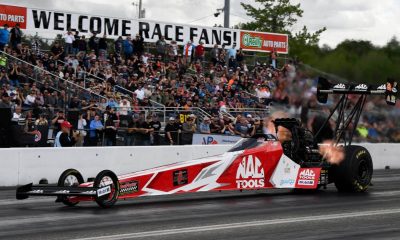
 Motorsports1 week ago
Motorsports1 week agoKalitta, Beckman & Hartford Win Mission #2Fast2Tasty Challenge at NHRA New England Nationals
-

 Motorsports2 weeks ago
Motorsports2 weeks agoNASCAR Penalty Report: Charlotte Motor Speedway (May 2025)


